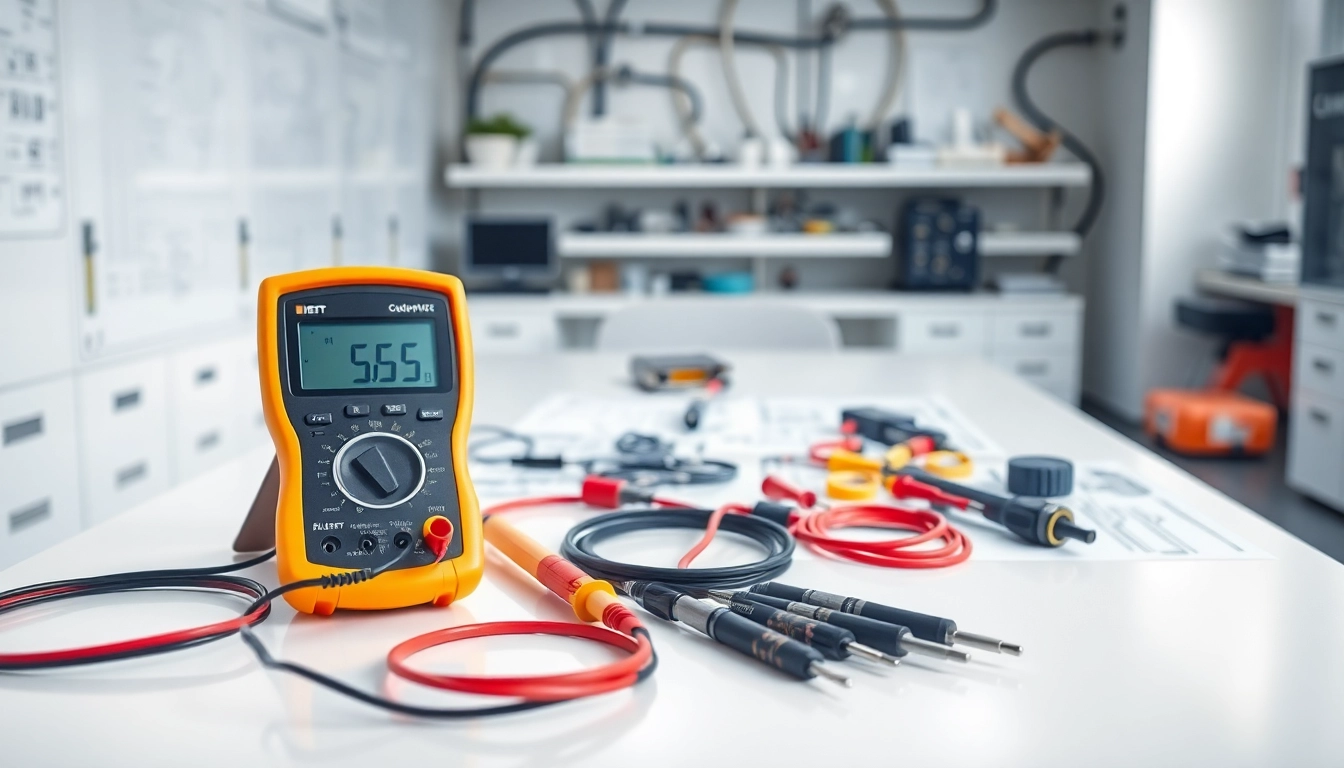Understanding Electrical Testing
In an age where technology permeates nearly every aspect of our lives, the importance of reliable electrical systems cannot be understated. Electrical testing serves as a cornerstone in the maintenance, safety, and efficiency of these systems. Essentially, electrical testing is an evaluation process that ensures electrical components perform within their specified parameters when power is applied. Regular testing not only prevents malfunctions but also enhances the longevity and efficiency of electrical systems. For further insights into this vital field, you can explore Electrical Testing methodologies.
What is Electrical Testing?
Electrical testing encompasses a variety of practices designed to assess the functionality and safety of electrical components, systems, and installations. These tests are critical in applications ranging from residential electrical systems to industrial setups. The process typically involves applying electrical power under controlled conditions to identify performance parameters, uncover defects, or confirm compliance with specific standards. Various forms of testing may include functional testing, safety testing, and stress testing, each geared toward evaluating different characteristics of the electrical system.
Importance of Electrical Testing in Safety
The risks associated with electrical failures are significant, encompassing everything from equipment damage to catastrophic safety incidents like fires or electrical shocks. Regular electrical testing is instrumental in identifying potential hazards before they escalate into severe problems. Key safety elements include:
- Early Detection of Faults: Tests can reveal insulation failures, circuit flaws, and other issues that, if left unchecked, could result in electrical fires.
- Compliance with Regulations: Many industries are mandated to adhere to specific guidelines and standards to ensure safety; electrical testing helps maintain compliance.
- Protection of Equipment and Personnel: By ensuring systems are functioning correctly, companies can protect both their assets and their employees from electrical hazards.
Key Concepts in Electrical Testing
Understanding the key concepts of electrical testing is essential for effective implementation. Components such as voltage, current, resistance, and power factor are foundational. Knowing how these elements interact helps technicians properly diagnose issues and evaluate system performance.
Types of Electrical Testing Methods
Parametric and Functional Tests
Parametric testing refers to the evaluation of predefined parameters such as voltage, current, and resistance to ensure they meet designated thresholds. Meanwhile, functional testing assesses the operational capabilities of components or systems to ensure they perform as expected under load conditions. These tests can cover a range of applications, from simple circuit evaluations to complex automated systems.
Visual Inspection vs. Technical Testing
Visual inspections serve as an initial step in identifying obvious faults like corrosion, physical damage, or improper installations. While visual checks are crucial, they cannot substitute for more comprehensive technical testing, which involves specialized tools and techniques to measure performance metrics accurately. Integrating both methods provides a more thorough assessment of electrical systems.
Common Industry Standards for Electrical Testing
Several organizations and regulatory bodies establish guidelines for electrical testing. Prominent standards include:
- ANSI/IEEE Standards: These govern various aspects of electrical testing and equipment performance.
- IEC Standards: The International Electrotechnical Commission provides global standards that ensure safety and efficiency.
- NEMA Specifications: These focus on the performance of electrical equipment in various applications to ensure safety and reliability.
Benefits of Regular Electrical Testing
Preventing Equipment Failures
Regular electrical testing can significantly reduce the risk of unexpected equipment failures. By identifying issues early, organizations can implement corrective measures, ensuring that systems remain operational. This proactive stance diminishes downtime and extends equipment lifespan, ultimately translating to cost savings.
Enhancing System Efficiency
Another key benefit of electrical testing is improved energy efficiency. Testing helps identify areas where power loss occurs due to faulty connections or outdated equipment, allowing for upgrades or repairs. This not only saves money on energy bills but also contributes to a more sustainable operational footprint.
Compliance with Safety Regulations
Compliance with safety regulations is critical in avoiding legal penalties and ensuring employee safety. Regular electrical testing supports adherence to industry standards and local regulations, fostering a culture of safety within the workplace.
Best Practices for Electrical Testing
Essential Tools and Equipment
To execute effective electrical testing, having the right tools is imperative. Commonly used tools include:
- Multimeters: Essential for measuring voltage, current, and resistance.
- Insulation Testers: Used to verify insulation integrity and detect breakdowns.
- Power Analyzers: Useful for analyzing power consumption and efficiency metrics.
Step-by-Step Testing Procedures
Executing electrical tests should follow a systematic approach. Key steps typically include:
- Preparation: Review specifications and safety data sheets.
- Inspection: Conduct visual and preliminary checks.
- Testing: Use appropriate tools to perform defined tests.
- Documentation: Record test results for analysis and compliance.
- Review: Evaluate the findings and make recommendations for maintenance or upgrade.
Interpreting Electrical Test Results
Once testing is completed, interpreting the results is crucial for determining the next steps. Understanding what the readings mean in the context of operational standards and safety metrics allows technicians to make informed decisions regarding repairs or replacements.
Future Trends in Electrical Testing
Technological Innovations in Testing Equipment
The electrical testing industry is witnessing rapid technological advancements. Innovations such as digital multimeters, advanced thermal imaging, and smart grid technologies are improving testing accuracy and efficiency. These tools facilitate remote monitoring, making it easier to conduct tests on complex systems without the need for a physical presence.
Data Analytics in Electrical Testing
Data analytics is becoming increasingly significant in electrical testing. By leveraging big data, technicians can predict potential system failures, analyze patterns of abnormalities, and optimize testing schedules. This data-driven approach enhances preventive measures and improves overall operational efficiency.
Regulatory Changes Impacting Testing Standards
As technology evolves, so too do the regulations governing electrical systems. Staying informed about changes in standards is essential for compliance and best practices. As regulatory bodies update their guidelines, organizations must adapt their testing methodologies to ensure they meet the latest safety and performance requirements.



